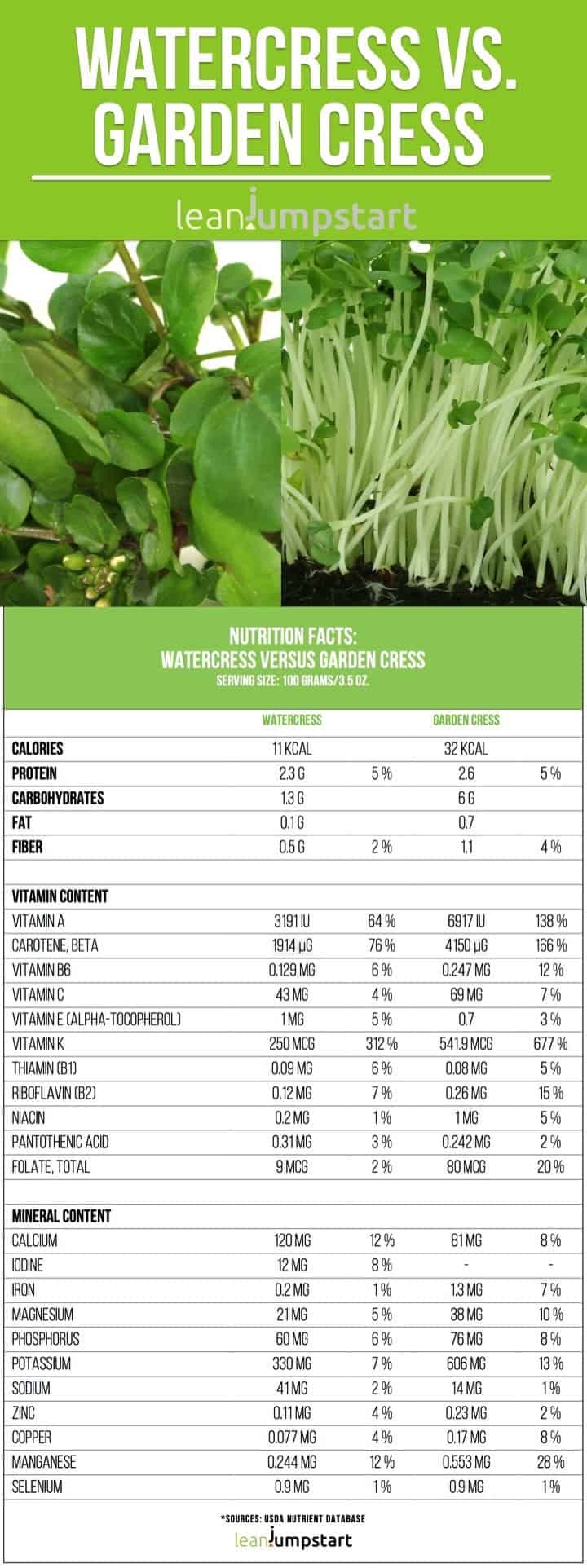Introduction
Garden cress and watercress are two popular leafy greens often confused due to their peppery flavors and nutritional benefits. Both belong to the Brassicaceae family and are celebrated for adding zest and health benefits to salads, sandwiches, and garnishes. However, understanding the distinctions between garden cress and watercress is crucial for gardeners, chefs, and health enthusiasts alike.
This article explores the primary differences between garden cress and watercress, their unique nutritional profiles, cultivation methods, culinary uses, and health benefits. Whether you’re deciding which to grow in your garden or which to include in your diet, this comprehensive comparison offers expert insights to help you make informed choices.
What Is Garden Cress? Characteristics and Growing Conditions
Botanical Profile and Appearance
Garden cress (Lepidium sativum) is an annual herb with small, bright green leaves and a distinctive peppery taste. It grows quickly, often ready to harvest within 7-14 days, making it a favorite for sprouting indoors or in small garden patches.
Growth Requirements
- Thrives in well-drained soil with moderate moisture.
- Prefers cooler temperatures around 10-20°C (50-68°F).
- Can be grown indoors on windowsills or outdoors in garden beds.
Culinary Uses
Garden cress is commonly used fresh in sandwiches, salads, and garnishes. Its strong, peppery flavor adds a spicy kick, making it popular in European and Middle Eastern cuisines.
What Is Watercress? Characteristics and Growing Conditions
Botanical Profile and Appearance
Watercress (Nasturtium officinale) is a semi-aquatic perennial plant with round, dark green leaves and a crisp texture. It has a distinct sharp, peppery flavor often described as more intense than garden cress.
Growth Requirements
- Requires abundant fresh, flowing water or consistently moist soil.
- Prefers cooler environments similar to garden cress but needs water-rich habitats.
- Commonly found growing wild near streams or cultivated in controlled aquatic systems.
Culinary Uses
Watercress is a staple in salads, soups, and sandwiches. Its crunchy texture and bold flavor elevate dishes like watercress soup and add a nutritious boost to fresh meals.
Nutritional Comparison: Garden Cress vs Watercress
Both greens are nutrient-dense, but they differ slightly in composition:
| Nutrient | Garden Cress (per 100g) | Watercress (per 100g) |
|——————-|————————-|———————–|
| Vitamin C | ~69 mg | ~43 mg |
| Vitamin K | ~80 mcg | ~250 mcg |
| Calcium | ~70 mg | ~120 mg |
| Iron | ~2 mg | ~0.2 mg |
| Calories | ~32 | ~11 |
Key Insights:
– Watercress provides significantly more Vitamin K and calcium, supporting bone health.
– Garden cress offers more iron, beneficial for blood health.
– Both are low in calories but rich in antioxidants and phytochemicals.
Health Benefits and Medicinal Uses
Garden Cress
- Rich in antioxidants that combat oxidative stress.
- Supports digestion and may alleviate respiratory symptoms.
- Contains glucosinolates, compounds linked to cancer prevention.
Watercress
- Known for anti-inflammatory and antimicrobial properties.
- High Vitamin K content aids in blood clotting and bone metabolism.
- May improve cardiovascular health by reducing cholesterol.
Experts agree that incorporating either or both into your diet can enhance overall health due to their potent bioactive compounds.
Practical Tips for Growing and Using Garden Cress and Watercress
Growing Tips
- Garden Cress: Sow seeds densely in shallow trays or garden beds; harvest young leaves for best flavor.
- Watercress: Requires a water source; consider hydroponic setups or grow near ponds/streams.
Culinary Tips
- Add garden cress fresh to sandwiches or blend into smoothies for a spicy note.
- Use watercress in salads, soups, or as a fresh garnish to add crunch and nutrition.
- Both greens pair well with mild cheeses, eggs, and citrus-based dressings.
Conclusion
Garden cress and watercress, while similar in their peppery taste and nutritional richness, differ significantly in growth habits, nutrient profiles, and culinary applications. Garden cress grows fast and easily in soil, offering a quick spicy addition rich in iron and Vitamin C. Watercress thrives in watery environments, delivering a crunchier texture and higher Vitamin K and calcium levels.
Choosing between them depends on your cultivation capabilities, flavor preferences, and nutritional goals. Including both in your diet can diversify flavors and maximize health benefits. Start experimenting with garden cress and watercress today to enjoy their fresh, vibrant flavors and impressive nutrient content.
